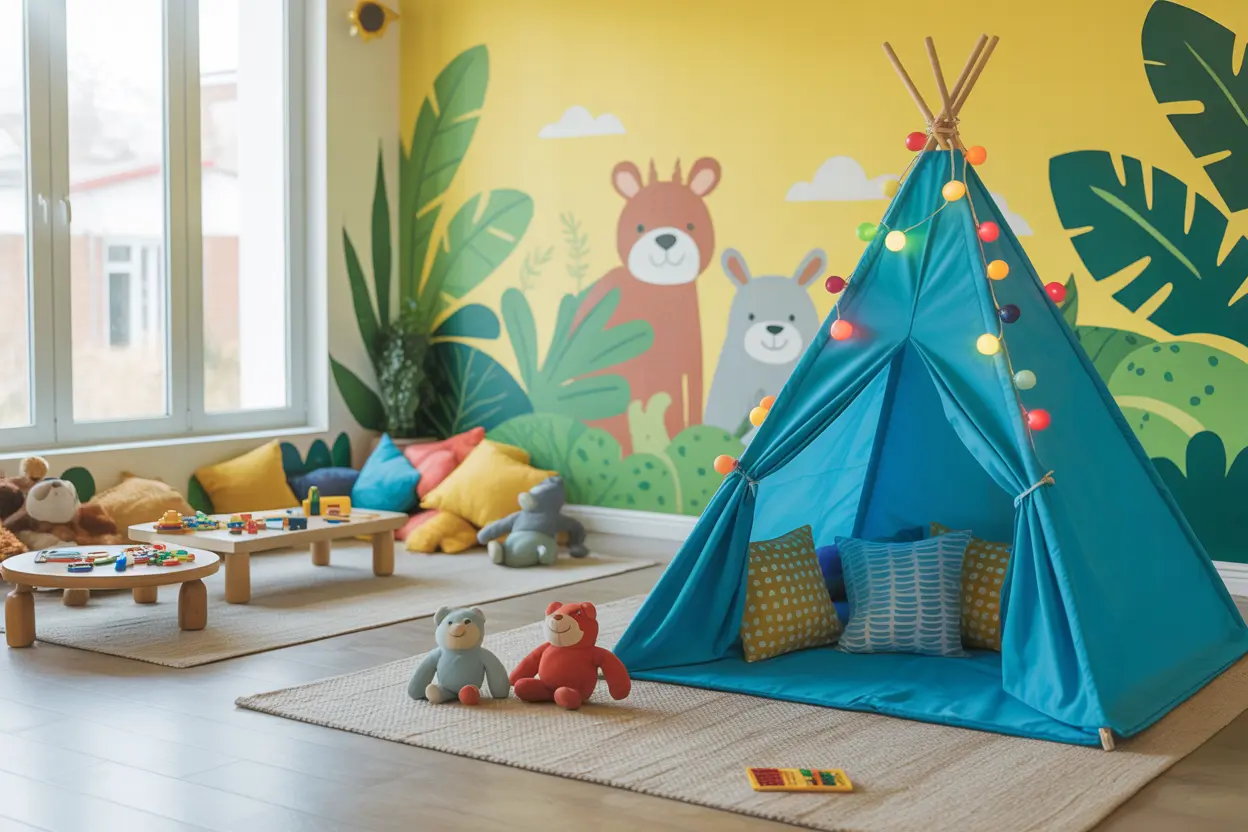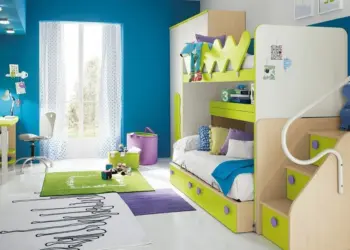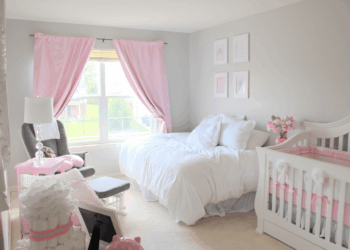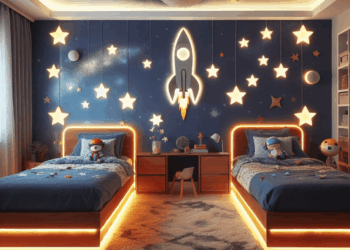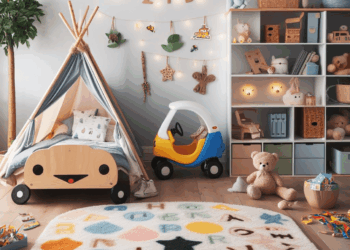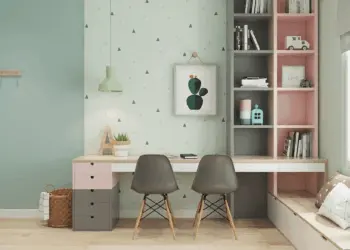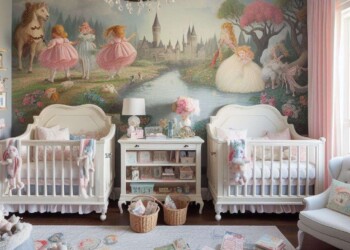A playroom is a special place where children can let their imaginations run wild and play to their heart’s content. Creating a well-designed playroom requires careful consideration of various factors, such as the age and gender of the children who will be using it, the available space, and of course, the furniture and décor. In this article, we will discuss how to design the perfect playroom, including everything from the floor to furniture.
Table of Contents
Playroom Flooring:
The flooring of the playroom is an important aspect to consider, as it must be able to withstand the rough and tumble of children’s play. Opt for durable materials that are easy to clean, such as vinyl, rubber or hardwood flooring. If you prefer carpet, choose a low-pile carpet that can be easily cleaned and replaced. Consider using interlocking foam tiles that provide a soft and safe surface for young children.
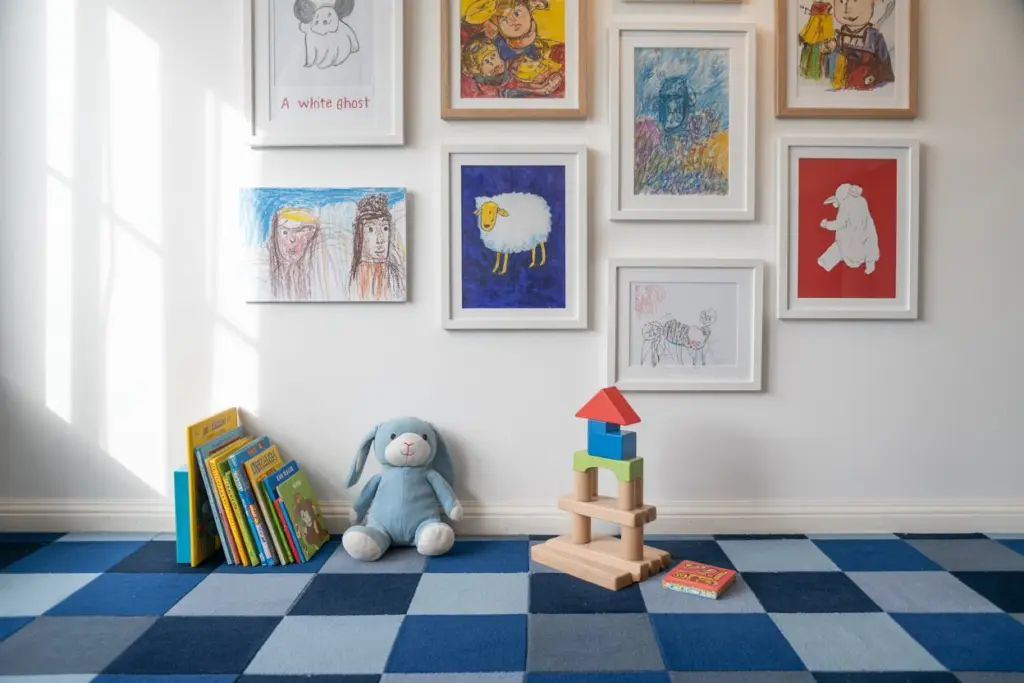
Wall colors and decor:
The playroom should be a fun and colorful space that reflects the personality of your child. Consider painting the walls in bright and cheerful colors such as yellow, blue, green or pink. Alternatively, use wallpaper with a playful pattern or theme that will ignite your child’s imagination. You can also add wall decals or murals to create a fun and engaging atmosphere. Additionally, consider using chalkboard or whiteboard paint on one of the walls to encourage creativity and artistic expression.
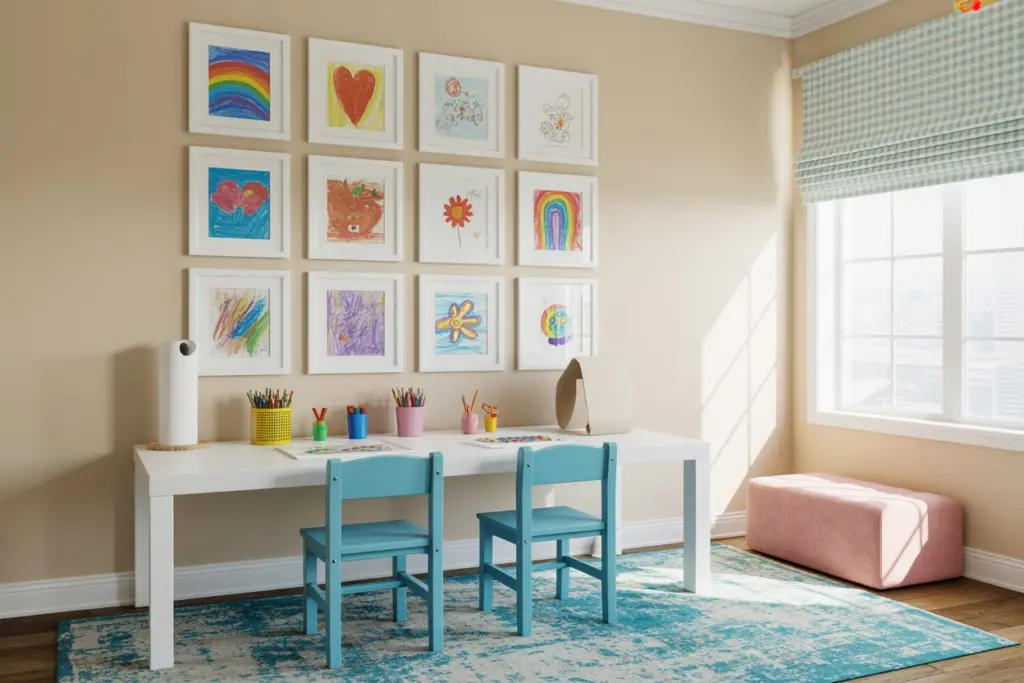
Playroom Furniture:
When it comes to furniture, consider the age and size of your children. For younger children, opt for smaller, lower furniture such as kid-sized tables and chairs, beanbags or floor cushions. As your children grow, consider adding larger pieces such as sofas, desks, and shelving units for storage. For a gender-neutral look, choose furniture with simple lines and neutral colors. Consider adding colorful accent pieces such as throw pillows or rugs to liven up the space.
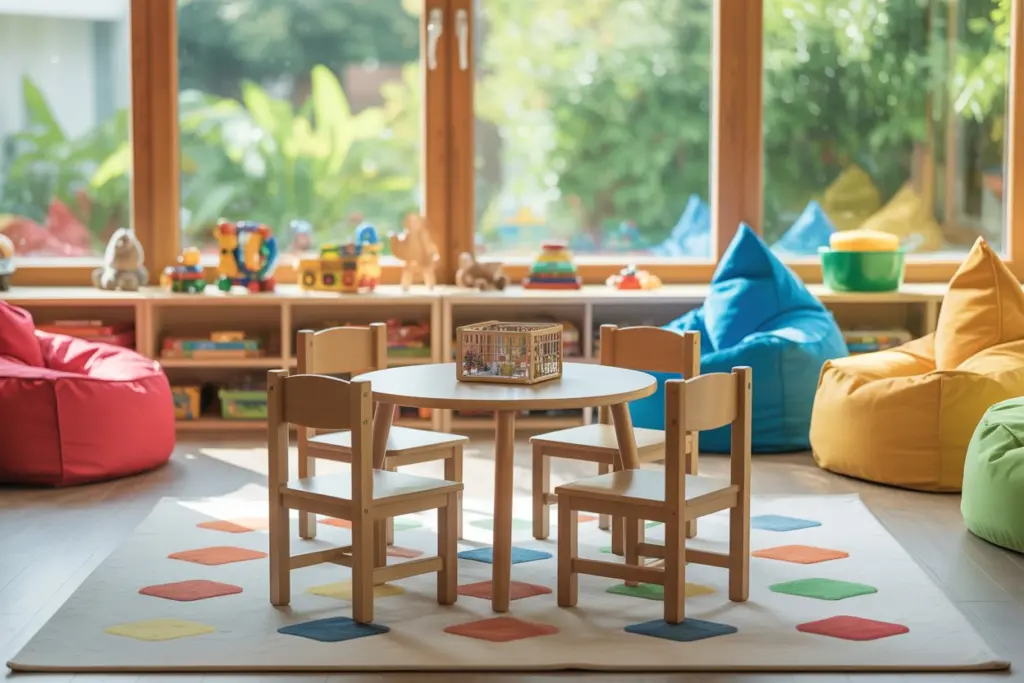
Playroom Storage:
One of the most important aspects of designing a playroom is providing adequate storage for toys and games. Consider using built-in shelving units, bookcases or cabinets to keep toys and games organized and out of sight. Alternatively, use easily accessed colorful storage baskets, bins or toy chests by your children.
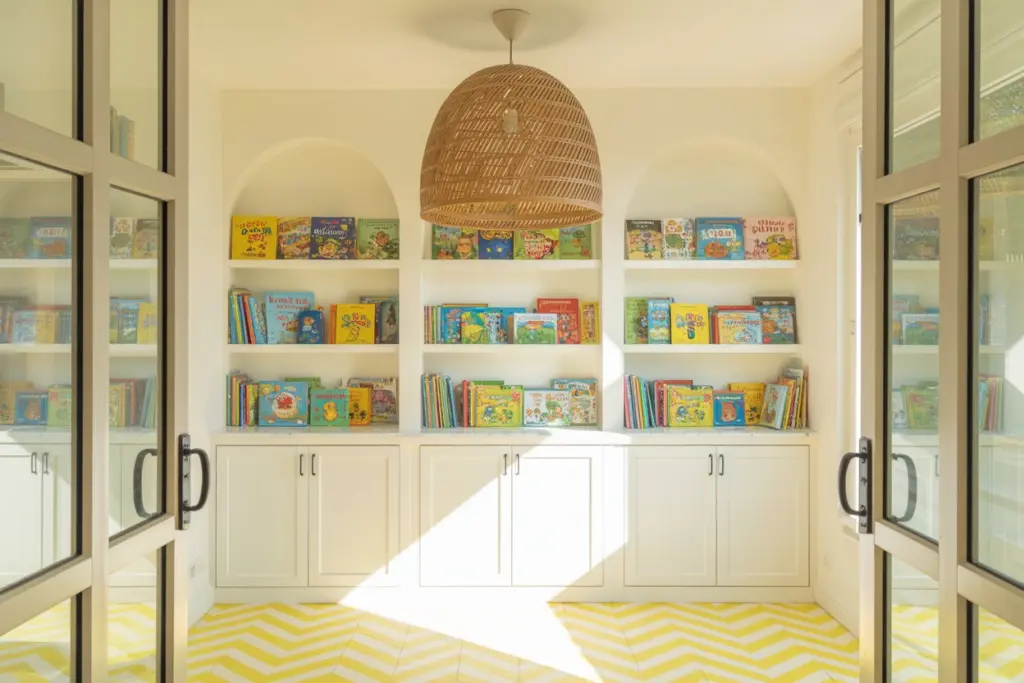
Playroom Lighting:
Lighting is an important aspect of any room, and the playroom is no exception. Consider using a combination of overhead lighting and task lighting to provide adequate illumination for different activities. Use table lamps or floor lamps for reading or playing board games, and add dimmer switches to control the brightness of the overhead lighting.
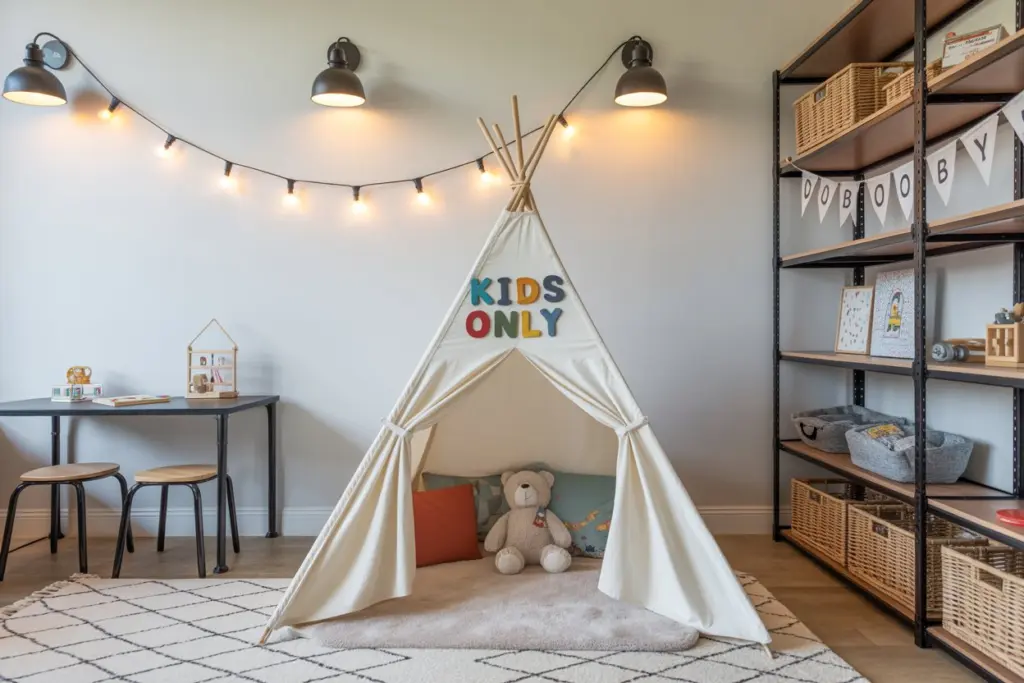
Age and Gender Considerations:
When designing a playroom, it’s important to consider the age and gender of your children. For example, younger children may need a designated area for napping or rest time, while older children may require a desk or computer station for homework or creative projects. Additionally, consider adding gender-neutral décor such as geometric shapes or animal prints, rather than focusing on traditional gender stereotypes.
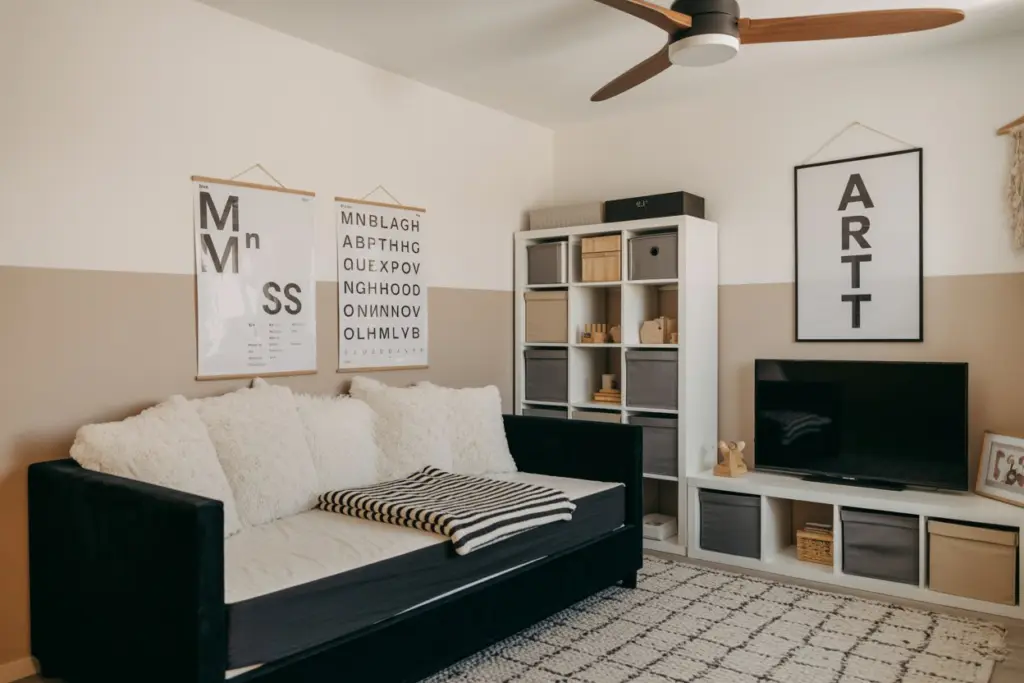
In conclusion, designing a playroom requires careful consideration of various factors, such as flooring, wall colors and décor, furniture, storage, lighting, and age and gender considerations. By incorporating these elements, you can create a space that is both functional and fun for your children to play in, regardless of their age or gender. With a little bit of creativity and planning, you can create a playroom that your children will love and enjoy for years to come.
Other tips and tricks for designing a playroom
Here are some additional tips and tricks to consider when designing a playroom:
Create Zones:
Divide the playroom into different zones or areas for different types of activities. For example, you can have a reading nook, a craft area, a dress-up corner, and a building block station. This will help keep the space organized and encourage your children to engage in different types of play.
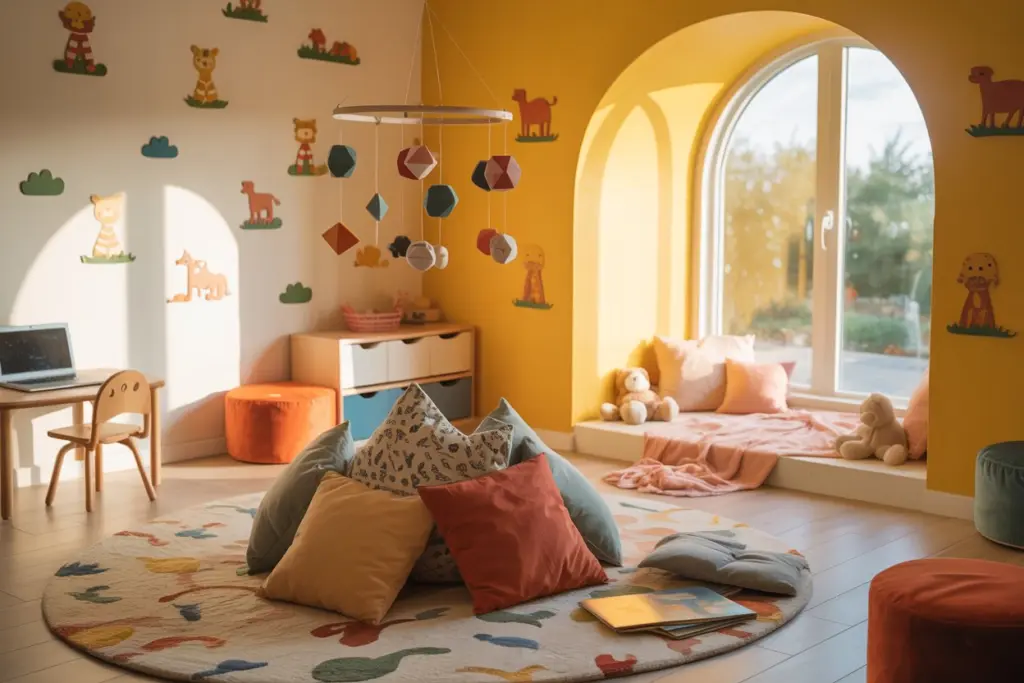
Safety First:
Safety should be a top priority when designing a playroom. Ensure that all furniture and décor are child-friendly and free of sharp edges or hazardous materials. You can also consider adding safety gates or door locks to prevent your children from wandering into unsafe areas.
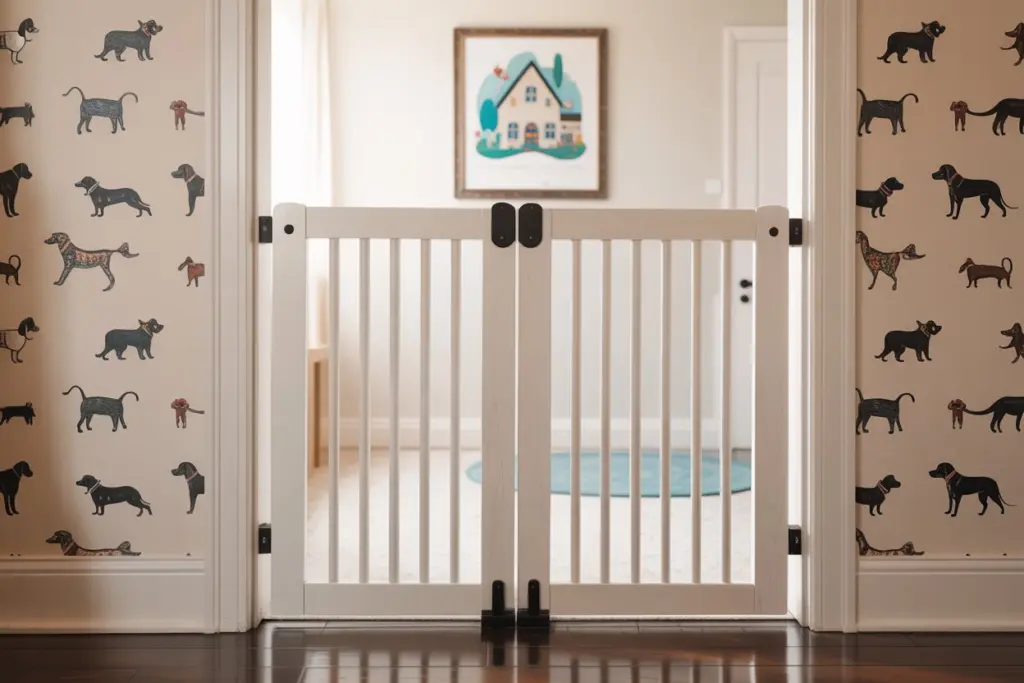
Personalize the Space:
Encourage your children to personalize the playroom by displaying their artwork, creating a gallery wall of family photos, or adding a chalkboard or whiteboard where they can write messages or draw pictures.
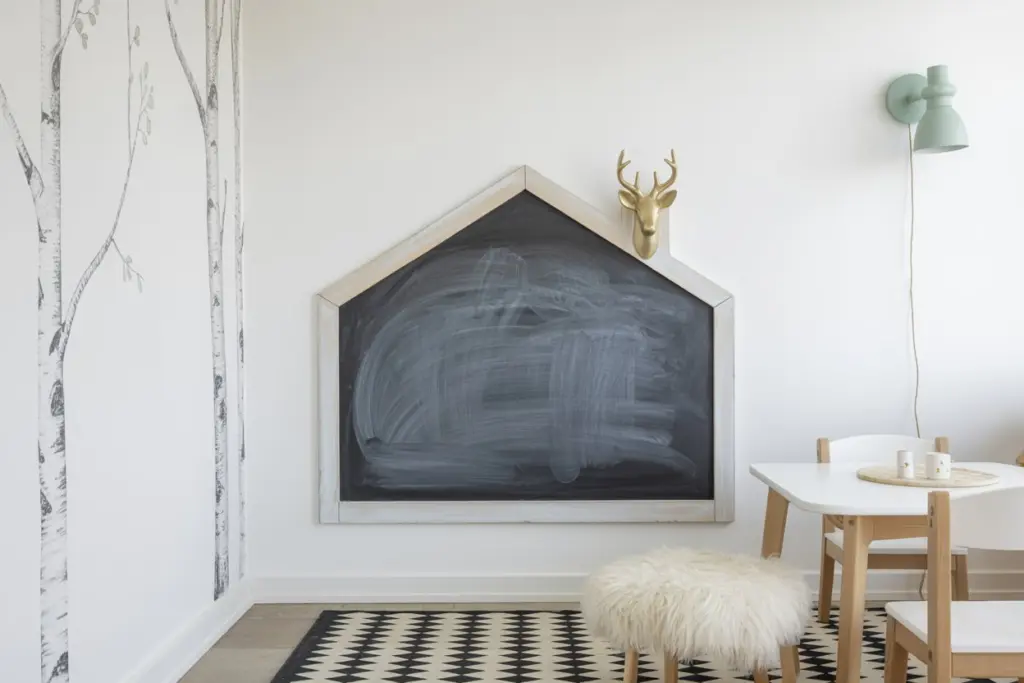
Incorporate Nature:
Bring a touch of nature into the playroom by adding plants, flowers, or a small indoor garden. This can help create a calming atmosphere and encourage your children to appreciate and care for nature.
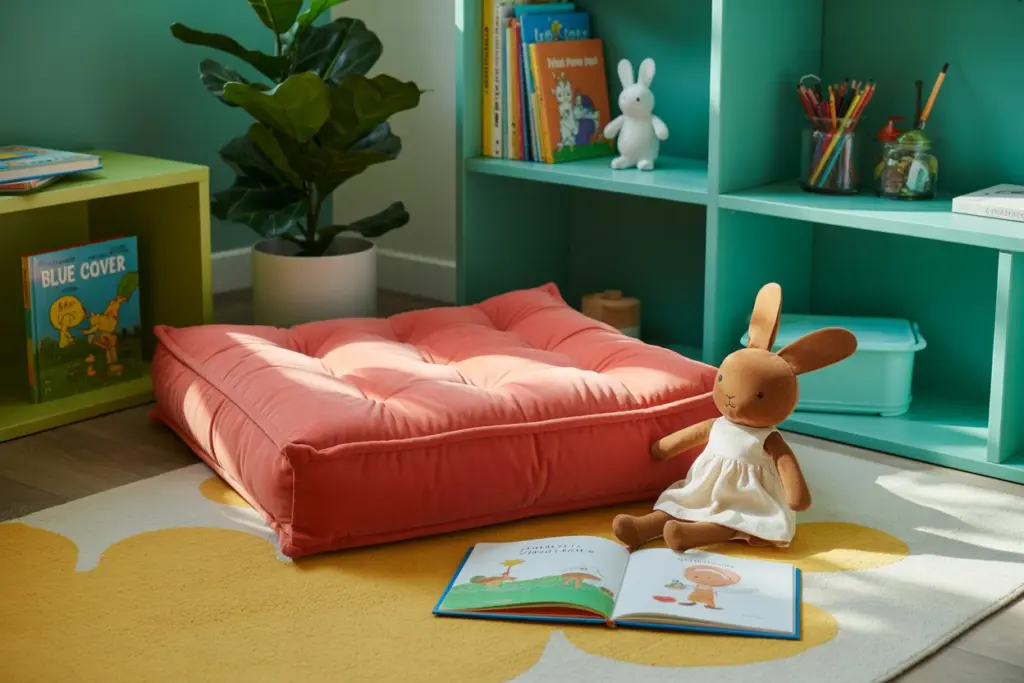
Make it Interactive:
Add interactive elements such as a climbing wall, a mini trampoline, or a sensory table to encourage your children to be active and engage in sensory play.
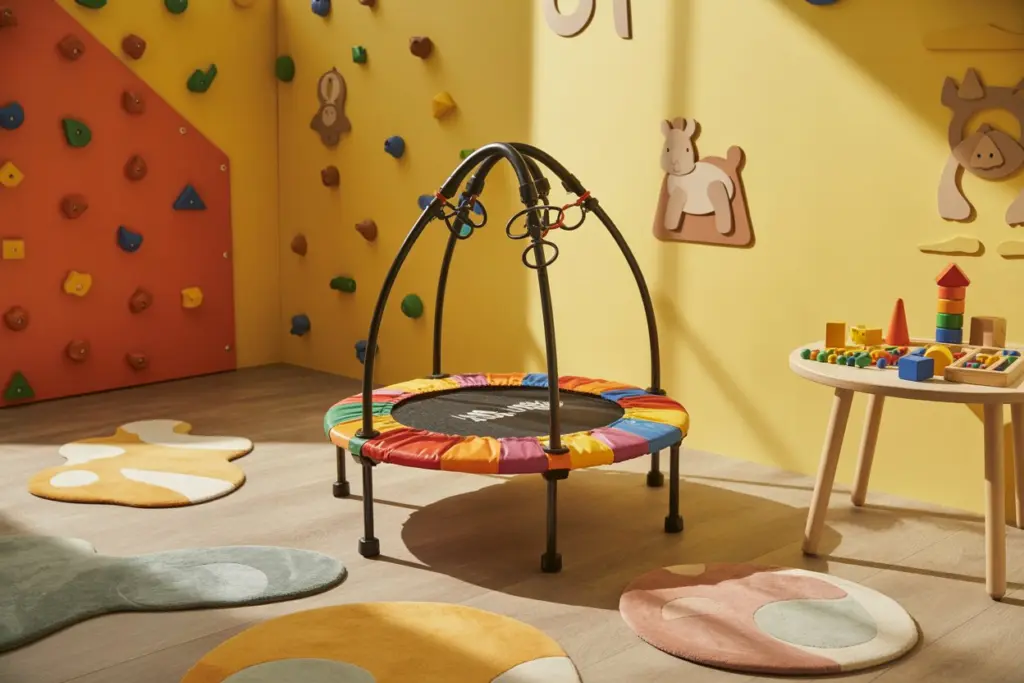
Storage Solutions:
Invest in smart storage solutions such as hanging organizers, under-bed storage, or wall-mounted baskets to maximize storage space and keep the playroom clutter-free.
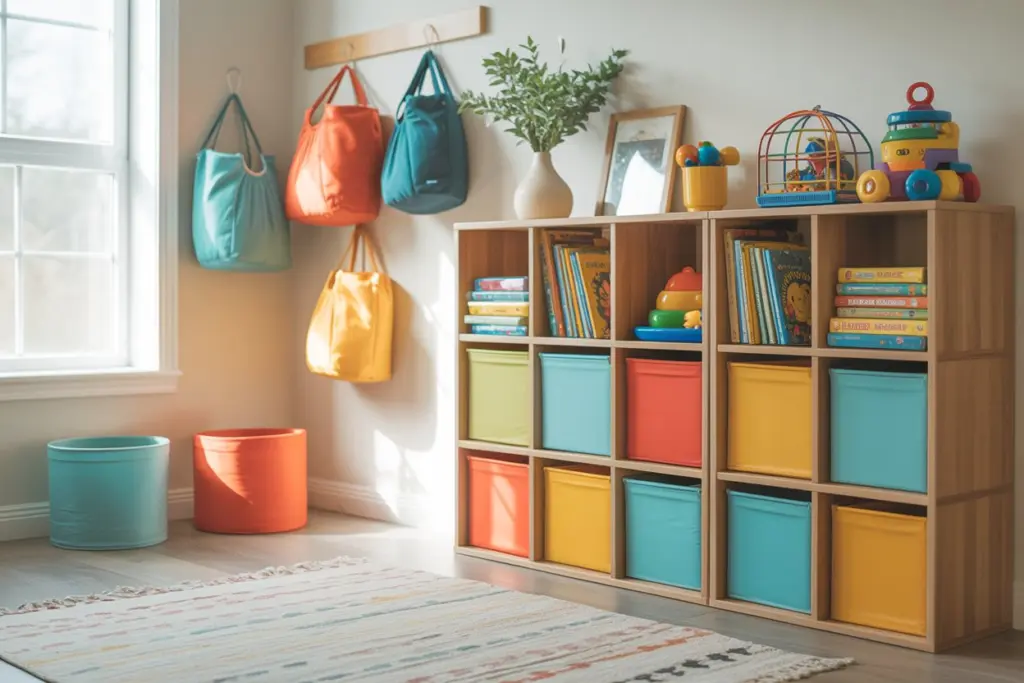
Don’t Forget Comfort:
Make sure the playroom is comfortable by adding cozy blankets, pillows, and rugs. This will encourage your children to spend more time in the space and make it feel like a welcoming and relaxing environment.

Designing a playroom requires creativity, planning, and attention to detail. By incorporating these tips and tricks, you can create a space that is not only functional and safe but also fun and engaging for your children to play and learn in.
Most popular themes for playroom
Designing a playroom with a theme can add an extra level of fun and creativity to the space. Here are some ideas for playroom themes and how to incorporate them into the design:
Outer Space Theme:
For an outer space-themed playroom, you can paint the walls dark blue or black and add stars, planets, and other space-themed decals. Hang a planet mobile from the ceiling and add a telescope, space-themed posters, and glow-in-the-dark stars. You can also add a spaceship playset or rocket ship tent for imaginative play.

Jungle or Safari Theme:
For a jungle or safari-themed playroom, you can paint the walls green and add jungle-themed decals such as trees, vines, and animals. Add a play tent shaped like a safari vehicle or a treehouse. You can also add a plush jungle rug or animal print beanbag chairs for seating.
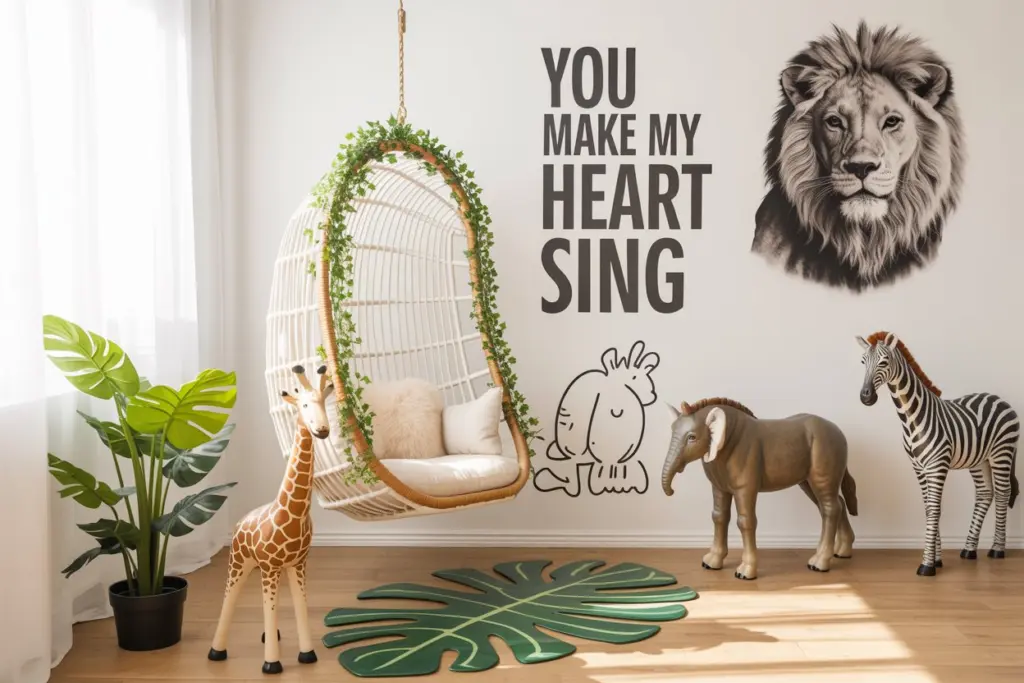
Underwater Themed playroom:
For an underwater-themed playroom, you can paint the walls blue and add ocean-themed decals such as fish, seaweed, and coral. Add a fish tank or wall-mounted aquarium for a touch of nature. You can also add a submarine playset or a mermaid tail blanket for imaginative play.
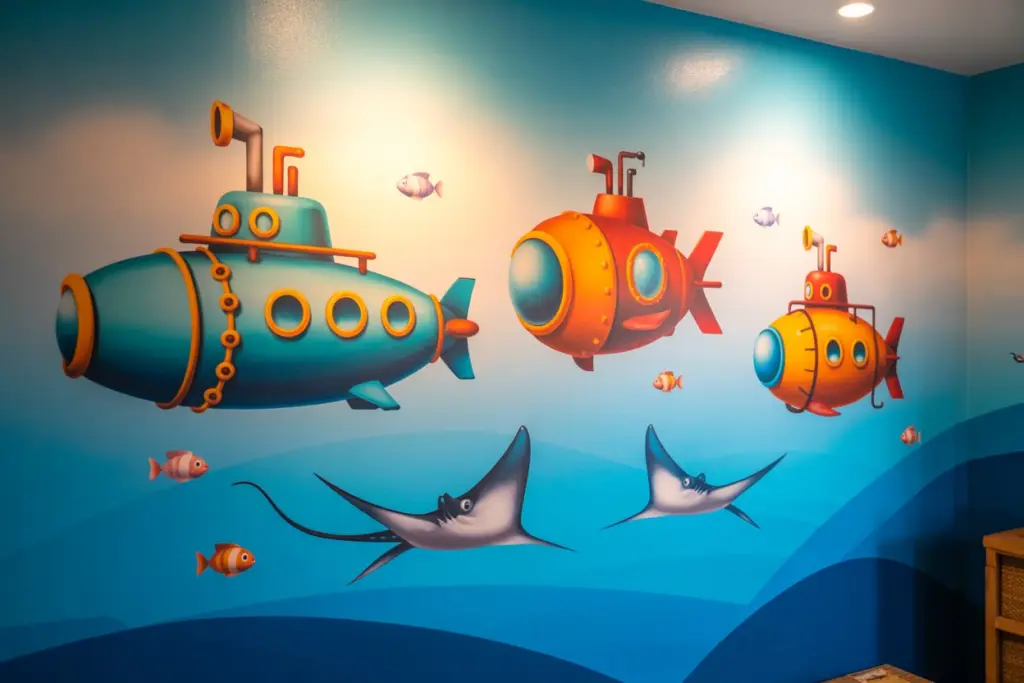
Castle or Princess Theme:
For a castle or princess-themed playroom, you can paint the walls pink or purple and add castle-themed decals such as turrets, flags, and knights. Add a princess tent or a castle playset. You can also add a royal throne chair or a plush unicorn for seating.
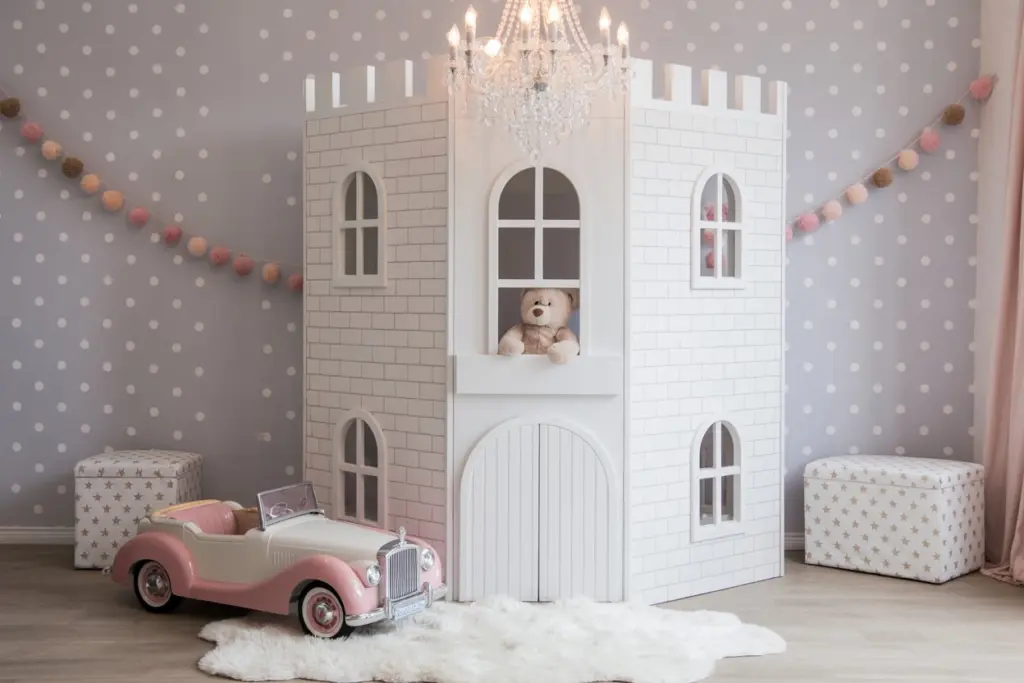
Superhero Themed playroom:
For a superhero-themed playroom, you can paint the walls bright primary colors and add superhero-themed decals such as masks, logos, and action words. Add a superhero cape and mask station or a superhero dress-up corner. You can also add a superhero action figure collection or a superhero-themed board game.
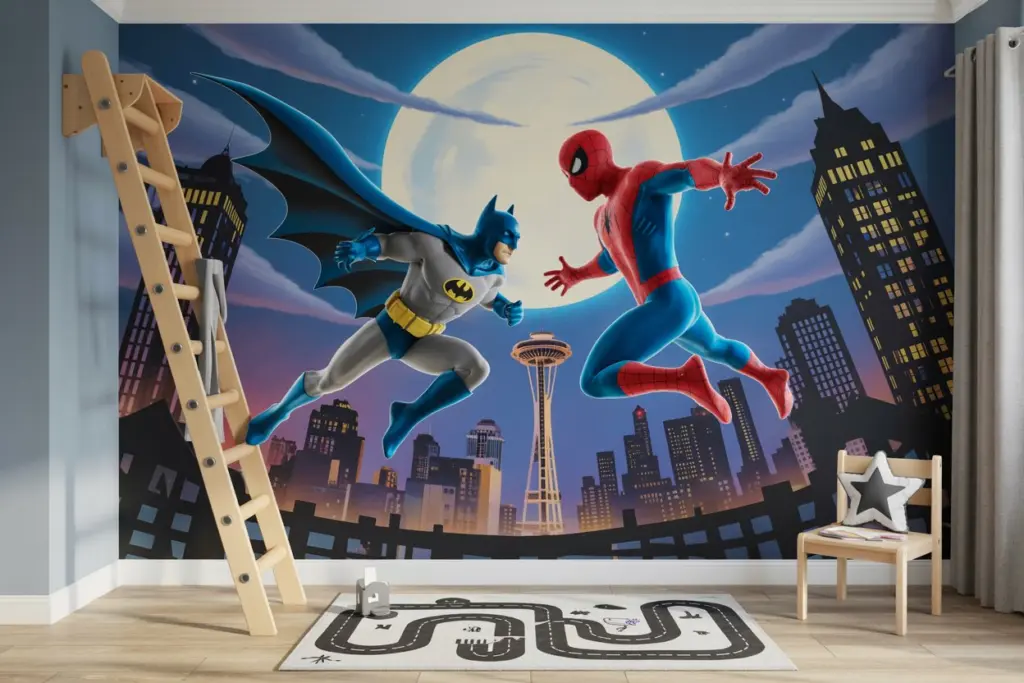
Sports Themed playroom:
For a sports-themed playroom, you can paint the walls in your child’s favorite team colors or add sports-themed decals such as basketballs, footballs, and soccer balls. Add a mini basketball hoop or a soccer goal for active play. You can also add a sports-themed table and chairs set or a sports-themed board game.
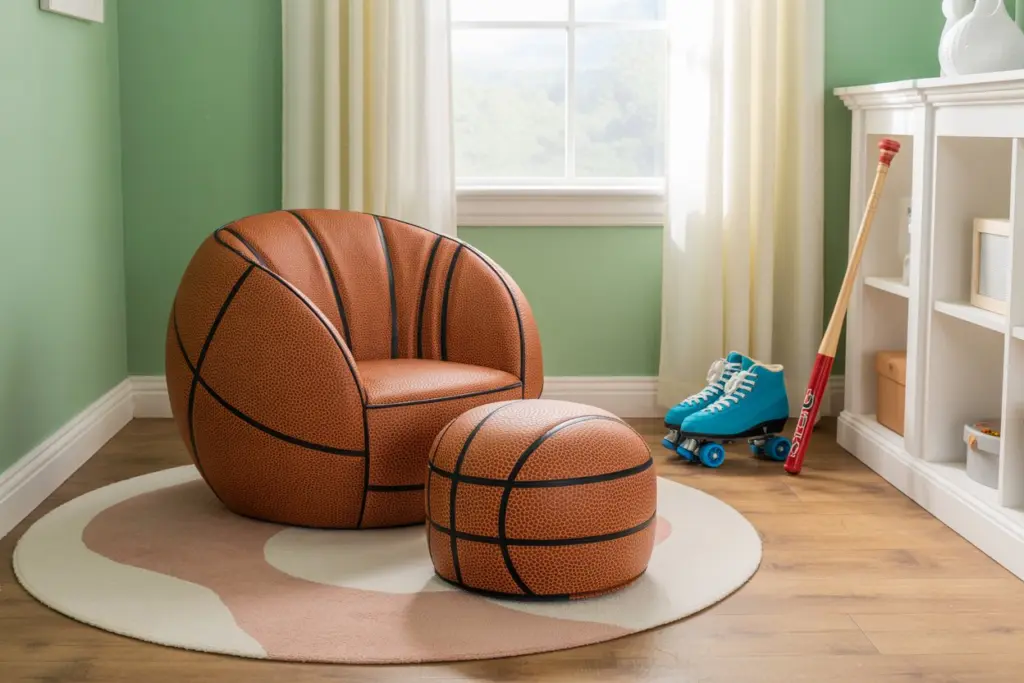
What if I don’t have an empty room for a playroom:
Not having an empty room to dedicate as a playroom doesn’t mean you can’t create a special space for your children to play in. Here are some ideas for creating a play area in different parts of your home:
Use a Corner of a Room:
You can create a play area in a corner of your living room, bedroom, or even in a hallway. Use a rug or foam tiles to define the space and add low-to-the-ground furniture such as a small table and chairs or floor cushions. Add storage units such as bookcases or cube shelves to keep toys and games organized and out of sight.
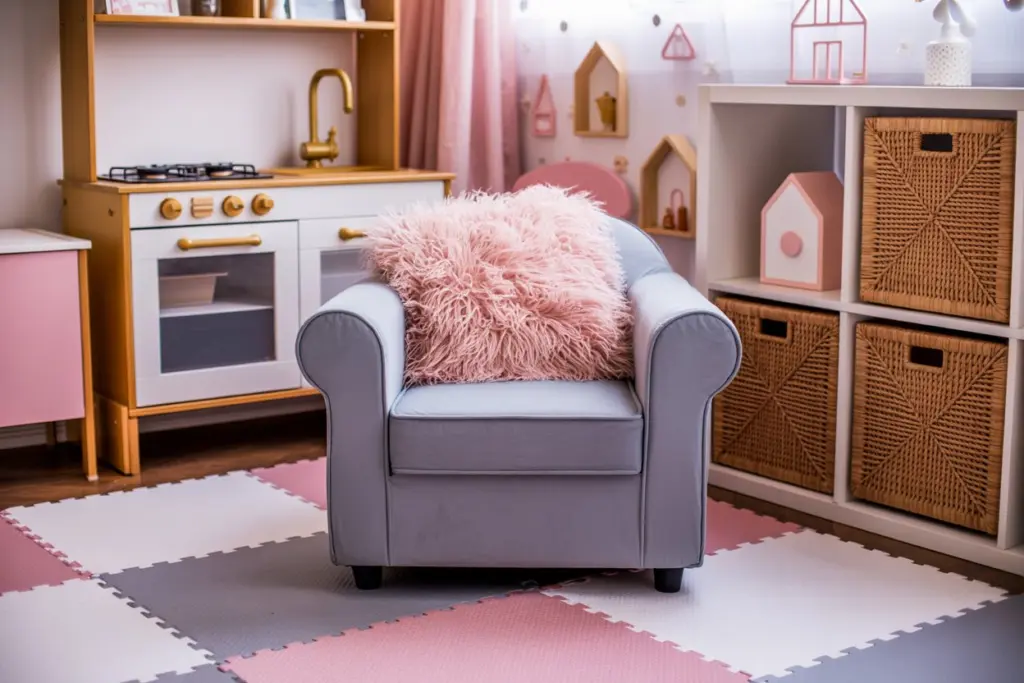
Convert a Closet:
If you have an unused closet, consider converting it into a mini playroom. Remove the doors and install shelving units or hanging organizers to store toys and games. Add a small table and chairs or beanbag chairs for seating. You can also add colorful curtains or a tent to create a cozy and private space.
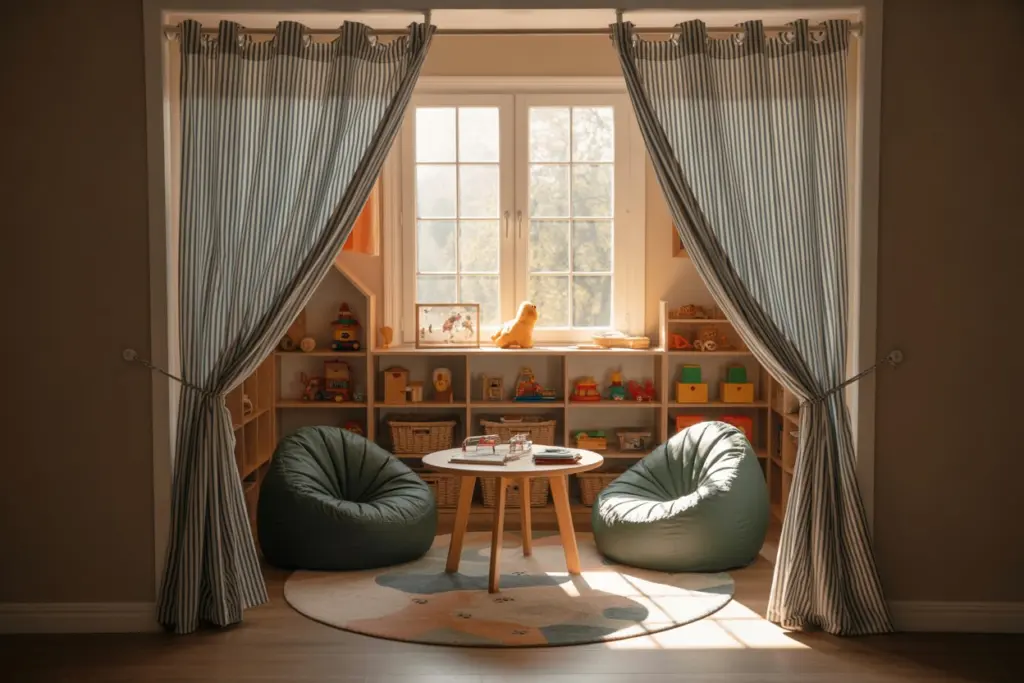
Under the Stairs:
The space under the stairs can turn into a fun and imaginative play area. Moreover, you can add a small table and chairs, a teepee, or a reading nook. Install shelves or storage bins to keep toys and games organized.
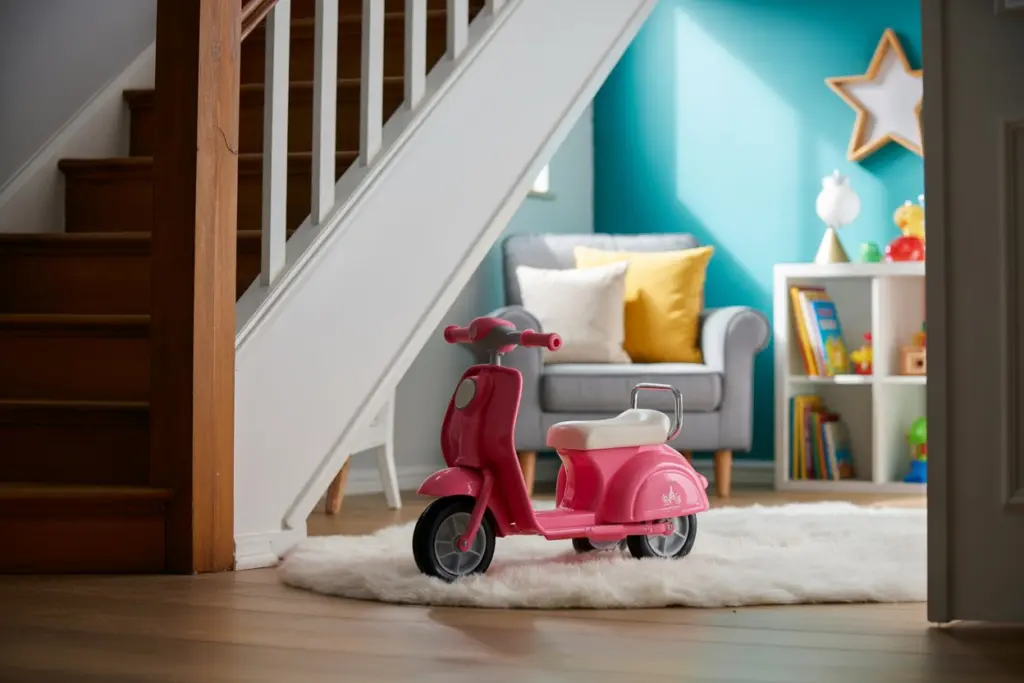
Use the Garage:
If you have a garage, consider converting part of it into a play area. Install a partition or use a curtain to separate the play area from the rest of the garage. Add foam tiles or a rug to create a soft and safe surface for play. You can also add a swing or a slide for extra fun.
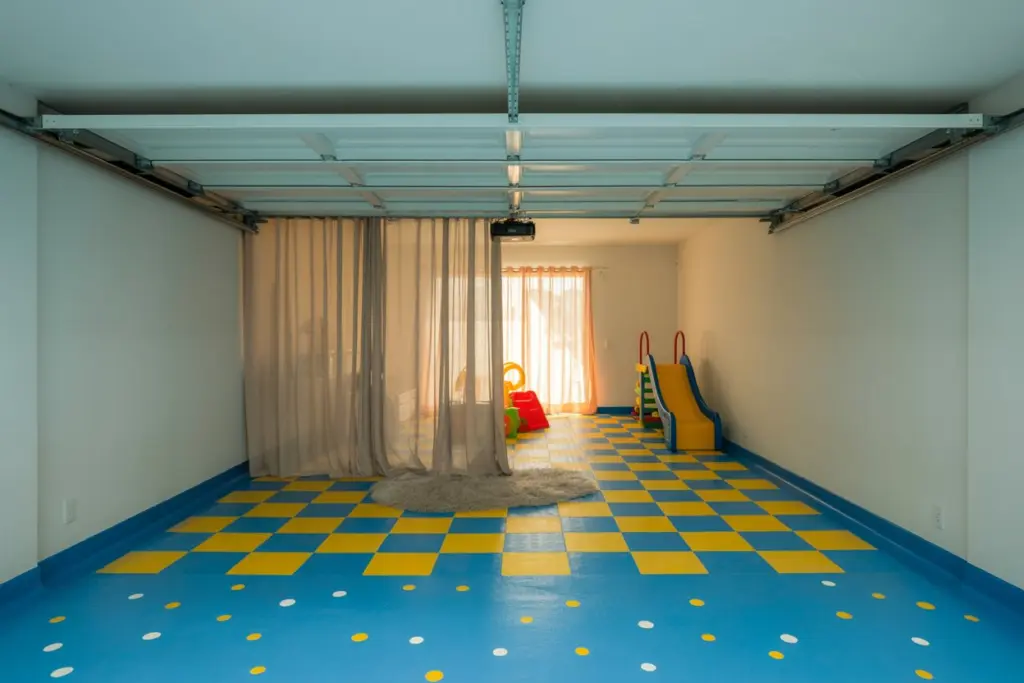
Outdoor Play Space:
Consider creating an outdoor play space in your backyard or patio. Add a playset, a sandbox, or a water table. You can also add a chalkboard, an art easel, or a playhouse for imaginative play.
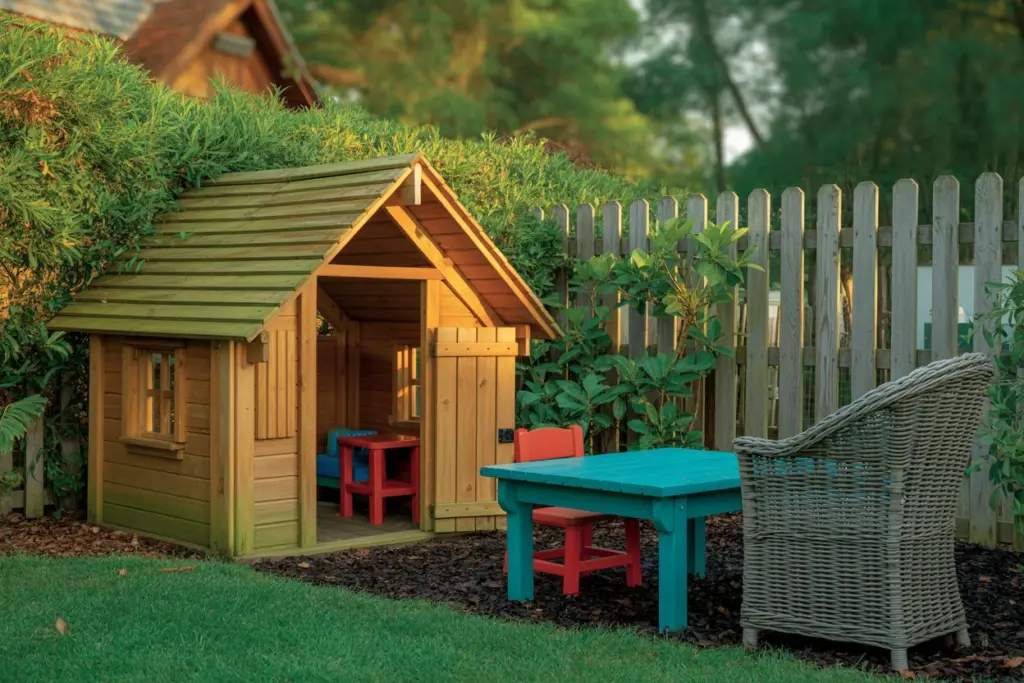
In conclusion, creating a play area in your home doesn’t necessarily require a dedicated room. With a little bit of creativity and resourcefulness, you can transform any space into a fun and engaging play area for your children.
